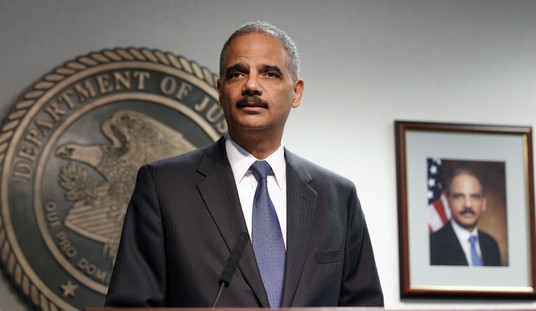If you’ve noticed a higher grocery bill in this era of supposedly low inflation, you’re not imagining things. Despite Washington estimates of low consumer inflation over the last few years, the prices of goods at the market are rising rapidly — especially for meat items, which have risen by double digits since 2011. Jen Singer celebrates in this CBS News profile when she spots bacon on sale for three dollars a pound, when bacon prices have shot up 22% over the last three years:
The adage “An apple a day keeps the doctor away” is impossible thanks to apple prices, she said.
“We go through one of these every few days,” she said, holding a loaf of bread. “It’s a big part of my take home pay.”
It’s is not her imagination. While the government says prices are up 6.4 percent since 2011, chicken is up 18.4 percent, ground beef is up 16.8 percent and bacon has skyrocketed up 22.8 percent, making it a holiday when it’s on sale.
“Oh my god!” Singer said as she spied bacon for $3.
The real problem, though, is that wages aren’t keeping pace with food inflation. They’re not even coming close, despite all of the talk about the recovering economy:
But the big problem for families: Wages are not budging. …
Median income is up only 1 percent a year. For Singer, that makes it hard to save for college tuition – which has been rising 6 percent to 8 percent every year for five decades.
Forget college; how is an average family supposed to keep up with inflation on the essentials? Singer’s turning down the heat in the house to save money for groceries, but the real problem is that the family’s buying power in wages is steadily and quickly eroding. Wage growth isn’t even keeping up with the government’s projected inflation, let alone the food inflation at the grocery store.
That won’t change until two pressures on the economy are reversed: rising costs on business and improvement of chronic joblessness. The latter keeps wages depressed by providing a large labor pool for a relatively small number of net jobs created over the last five years since the beginning of the recovery in June 2009. On average since then, we have created significantly fewer jobs each month than necessary to keep pace with population growth. In large part, the job-creation market has been stifled by extra costs and disincentives to investors and businesses in job-creating expansion and risk-taking. Those same costs, along with relatively high energy costs, get passed along to consumers in higher prices, putting them in the economic vise described in this CBS report.
Today’s the 5th anniversary of Barack Obama’s stimulus bill, as the Boss Emeritus notes. Where did the recovery go?








Join the conversation as a VIP Member